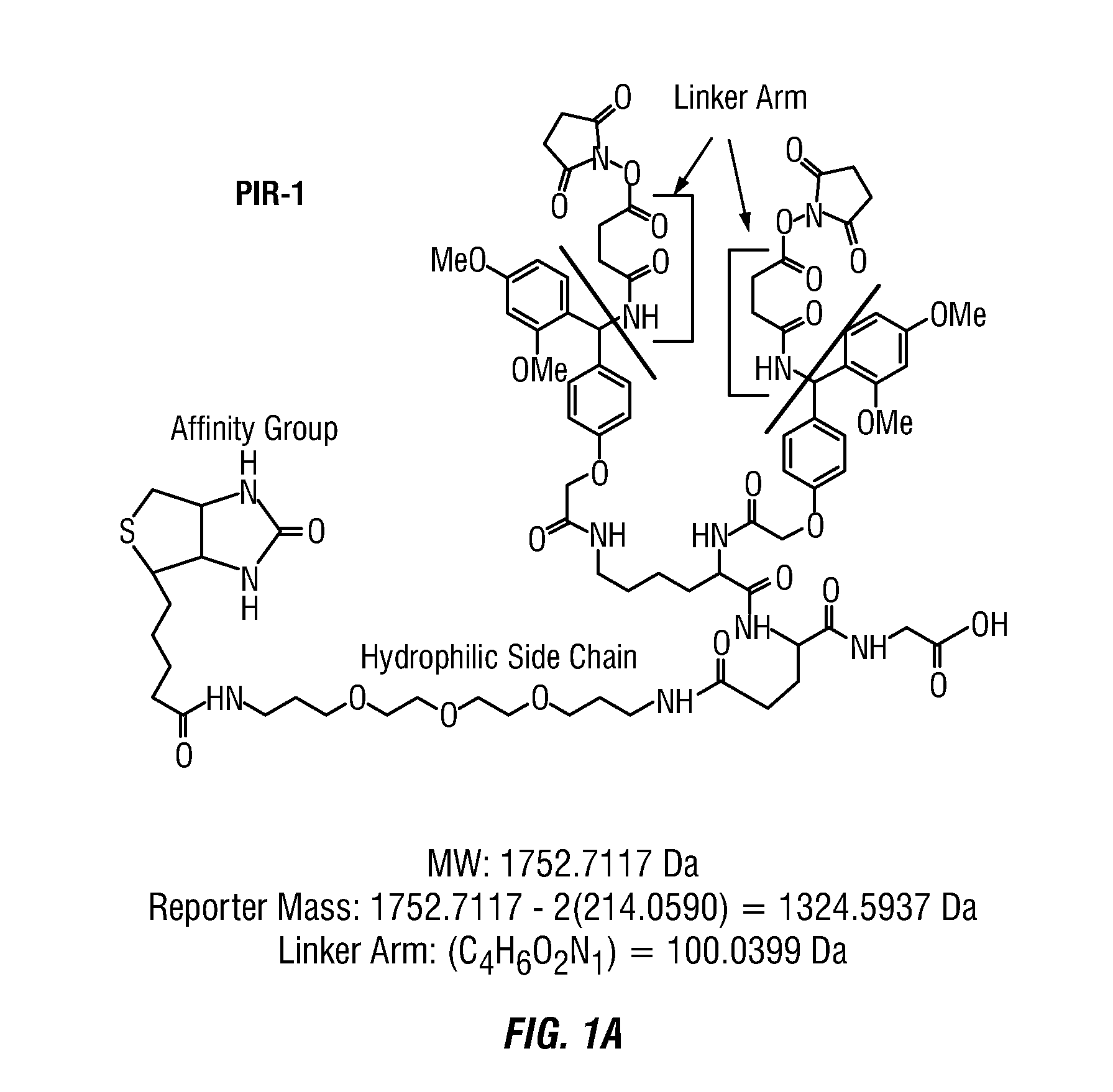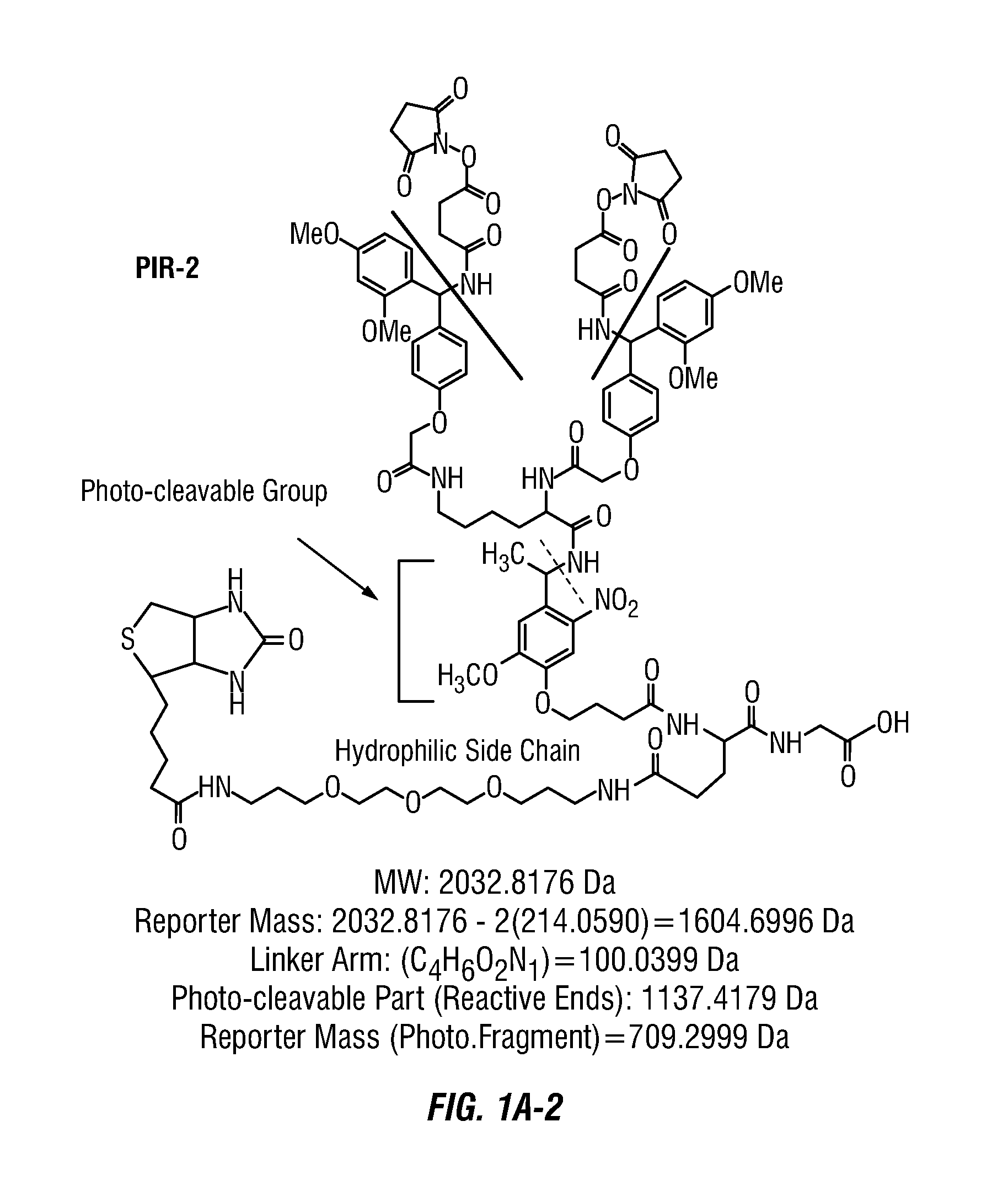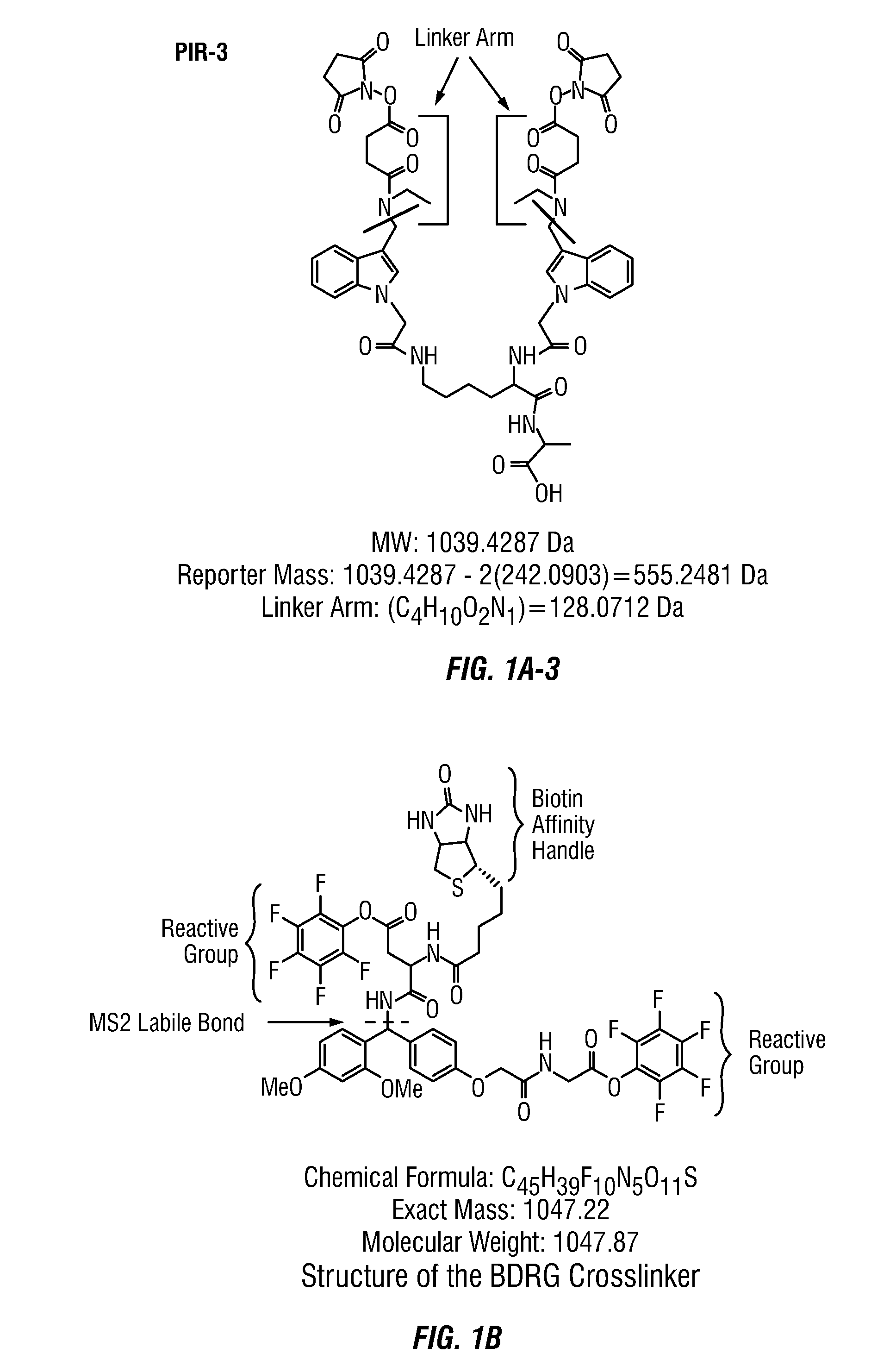Method to determine protein interaction sites
a protein interaction and site technology, applied in the field of protein interaction site determination, can solve the problems that none of these methods, however, is sufficiently convenient and informative to provide satisfactory data, and achieves the effects of avoiding the complicating factor of a separate reporter ion, facilitating identification of peptide sequences, and superior properties
- Summary
- Abstract
- Description
- Claims
- Application Information
AI Technical Summary
Benefits of technology
Problems solved by technology
Method used
Image
Examples
example 1
Synthesis of a Crosslinker with a BDRGD Framework and NHS Reactive Groups
[0059]1. Swell Fmoc-Glycine-HMPB-BHA resin (NovaBiochem) by addition of N,N-dimethylormamide (DMF) for 30 min.[0060]2. Wash resin 3×5 mL with DMF.[0061]3. Deprotect Fmoc using 2×5 mL 20% piperidine in DMF with N2 agitation for 10 min each treatment. Wash the resin with 5×2 mL DMF.[0062]4. Add Fmoc-RINK linker (2 eq, NovaBiochem) using benzotriazol-1-yl-oxytripyrrolidinophosphonium hexafluorophosphate (PyBOP, 3 eq), N-hydroxybenzotriazole (HOBt, 3 eq) and N,N-diisopropylethylamine (DIPEA, 6 eq) in DMF with N2 agitation for 2 hours.[0063]5. Repeat steps 2 to 4 with Fmoc-Aspartic acid-(2-phenylisopropylester)-OH (NovaBiochem).[0064]6. Repeat steps 2 and 3. Then add pre-activated Biotin-ONp (NovaBiochem) in DMF with N2 agitation for 2 hours (ONp ═O-nitrophenyl).[0065]7. Wash 3×5 mL with DMF, then 3×5 mL with dichloromethane (DCM).[0066]8. Cleave the final product from the resin by addition of 2 mL 1% trifluoroaceti...
example 2
Synthesis of the BDRG Crosslinker
[0070]The BDRG crosslinker was synthesized by Almac Sciences (England) by the method in Example 1, substituting a glycine-glycine spacer for the glycine-aspartic acid spacer, and pentafluorophenol for NHS.
example 3
Preparation of a Crosslinker with a GRCSS Framework and NHS Reactive Groups
[0071]
[0072]The free acid of the disulfide protected crosslinker was synthesized using 2-chlorotrityl resin. First, the Fmoc-RINK linker (2 eq, NovaBiochem) was loaded onto 2-chlorotrityl resin in DIPEA (6 eq) in DMF. Fmoc-Cys(tButhio)-OH (NovaBiochem) was added according to standard Fmoc solid phase peptide synthesis procedures. Finally, succinic anhydride was added in DIPEA (6 eq) in DMF. The free acid was cleaved from the resin using 1% TFA and dried under reduced pressure. The free acid was then activated by addition of DIC (6 eq) and NHS (6 eq) at a concentration of 50 mM in dry DMF overnight.
PUM
| Property | Measurement | Unit |
|---|---|---|
| molecular weight | aaaaa | aaaaa |
| mass spectral analysis | aaaaa | aaaaa |
| specific affinity | aaaaa | aaaaa |
Abstract
Description
Claims
Application Information
 Login to View More
Login to View More - R&D
- Intellectual Property
- Life Sciences
- Materials
- Tech Scout
- Unparalleled Data Quality
- Higher Quality Content
- 60% Fewer Hallucinations
Browse by: Latest US Patents, China's latest patents, Technical Efficacy Thesaurus, Application Domain, Technology Topic, Popular Technical Reports.
© 2025 PatSnap. All rights reserved.Legal|Privacy policy|Modern Slavery Act Transparency Statement|Sitemap|About US| Contact US: help@patsnap.com



